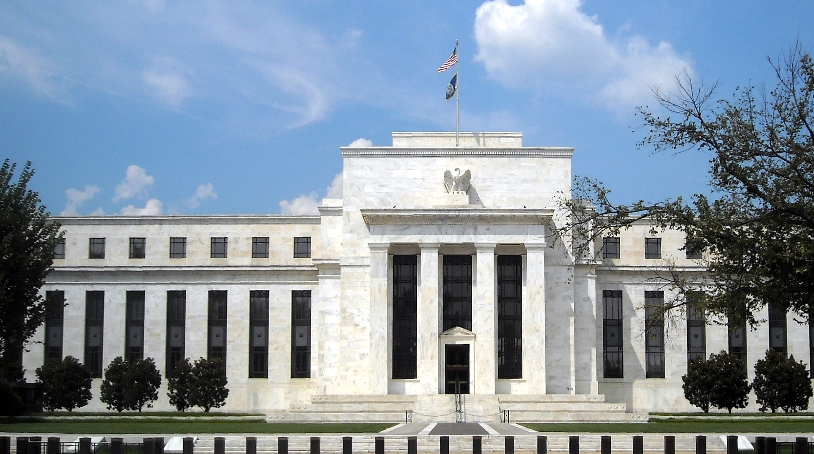Why the Federal Reserve favors debt over thrift
11/11/2015 / By Julie Wilson

In his book titled The Creature from Jekyll Island: A Second Look at the Federal Reserve, G. Edward Griffin takes readers on a journey through history as he recounts the development of America’s banking system and the creation of the Federal Reserve, which led to the elimination of fair and balanced banking in the U.S.
“In 1910, the number of banks in the United States was growing at a phenomenal rate. In fact, it had more than doubled to over twenty thousand in just the previous ten years. Furthermore, most of them were springing up in the South and West, causing the New York banks to suffer a steady decline of market share,” writes Griffin.
“Almost all banks in the 1880s were national banks, which means they were chartered by the federal government. Generally, they were located in the big cities, and were allowed by law to issue their own currency in the form of bank notes.
“Even as early as 1896, however, the number of non-national banks had grown to sixty-one per cent, and they already held fifty-four per cent of the country’s total banking deposits. By 1913, when the Federal Reserve Act was passed, those numbers were seventy-one per cent non-national banks holding fifty-seven per cent of the deposits. In the eyes of those duck hunters from New York, this was a trend that simply had to be reversed.”
Federal Reserve Act sought to end banks not controlled by government
“Competition also was coming from a new trend in industry to finance future growth out of profits rather than from borrowed capital. This was the outgrowth of free-market interest rates which set a realistic balance between debt and thrift.
“Rates were low enough to attract serious borrowers who were confident of the success of their business ventures and of their ability to repay, but they were high enough to discourage loans for frivolous ventures or those for which there were alternative sources of funding; for example, one’s own capital.
“That balance between debt and thrift was the result of a limited money supply. Banks could create loans in excess of their actual deposits, as we shall see, but there was a limit to that process. And that limit was ultimately determined by the supply of gold they held. Consequently, between 1900 and 1910, seventy per cent of the funding for American corporate growth was generated internally, making industry increasingly independent of the banks. Even the federal government was becoming thrifty.
“It had a growing stockpile of gold, was systematically redeeming the Greenbacks, which had been issued during the Civil War, and was rapidly reducing the national debt. Here was another trend that had to be halted. What the bankers wanted, and what many businessmen wanted also, was to intervene in the free market and tip the balance of interest rates downward, to favor debt over thrift. To accomplish this, the money supply simply had to be disconnected from gold and made more plentiful or, as they described it, more elastic.”
Greatest threat to banks? The general public
“The greatest threat, however, came, not from rivals or private capital formation, but from the public at large in the form of what bankers call a run on the bank. This is because, when banks accept a customer’s deposit, they give in return a ‘balance’ in his account.
“This is the equivalent of a promise to pay back the deposit anytime he wants. Likewise, when another customer borrows money from the bank, he also is given an account balance which usually is withdrawn immediately to satisfy the purpose of the loan. This creates a ticking time bomb because, at that point, the bank has issued more promises to ‘pay-on-demand’ than it has money in the vault. Even though the depositing customer thinks he can get his money any time he wants, in reality it has been given to the borrowing customer and no longer is available at the bank.
“The problem is compounded further by the fact that banks are allowed to loan even more money than they have received in deposit. The mechanism for accomplishing this seemingly impossible feat will be described in a later chapter, but it is a fact of modern banking that promises-to-pay often exceed savings deposits by a factor of ten-to-one.
“And, because only about three percent of these accounts are actually retained in the vault in the form of cash, the rest having been put into even more loans and investments, the bank’s promises exceed its ability to keep those promises by a factor of over three hundred-to-one.
“As long as only a small percentage of depositors request their money at one time, no one is the wiser. But if public confidence is shaken, and if more than a few per cent attempt to withdraw their funds, the scheme is finally exposed. The bank cannot keep all its promises and is forced to close its doors. Bankruptcy usually follows in due course.”
Source:
Tagged Under: banks, economy, Federal Reserve, money




















